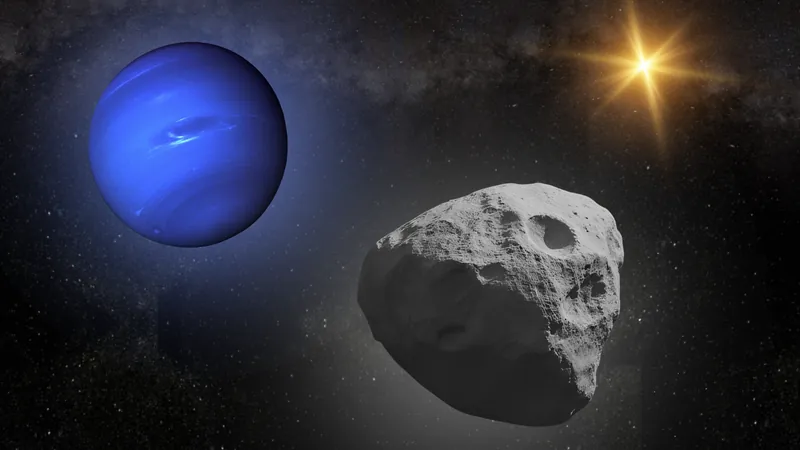
Astronomers Uncover a Cosmic Riddle: A Mystery Body Dancing in Sync with Neptune!
2025-07-18
Author: Wei
In a stunning revelation, astronomers have discovered a peculiar space rock at the far reaches of our solar system, engaged in a synchronized cosmic waltz with Neptune.
This enigmatic celestial object, named 2020 VN40, belongs to a category known as trans-Neptunian objects (TNOs) and is strikingly unique. It completes one orbit around the Sun for every ten orbits that Neptune accomplishes. Given that Neptune takes a whopping 164.8 years to make a single revolution, 2020 VN40's year stretches to an astronomical 1,648 years!
Researchers speculate that this synchronized dance was initiated when 2020 VN40 was temporarily captured by Neptune's gravitational grip, allowing scientists to peel back layers of our solar system's dynamics.
A Big Leap for Outer Solar System Studies
Rosemary Pike, the project leader from the Center for Astrophysics at Harvard & Smithsonian, expressed excitement over this finding, stating, "This is a significant breakthrough in understanding the outer solar system. It reveals that even the most distant areas, influenced by Neptune, harbor unique objects, and it provides new insights into the solar system's evolution."
The orbital characteristics of 2020 VN40 were identified through the Large Inclination Distant Objects (LiDO) survey, utilizing advanced telescopes like the Canada-France-Hawaii Telescope, along with support from the Gemini Observatory and the Walter Baade Telescope. LiDO specializes in scouting TNOs that take paths vastly inclined compared to Earth’s orbital plane.
The Curious Path of 2020 VN40
This remarkable TNO follows a highly tilted trajectory, averaging about 140 times the distance from Earth to the Sun. Interestingly, unlike other bodies that align rhythmically with Neptune and approach their closest points to the Sun when the planet is farthest from it, 2020 VN40 defies convention. Instead, it reaches its perihelion when Neptune is near the Sun, though their positions are misleading due to 2020 VN40's significant tilt, which actually places it far below the solar system's plane.
As Ruth Murray-Clay from the University of California Santa Cruz aptly put it, "This new motion is like finding a hidden rhythm in a song we thought we knew. It could revolutionize our understanding of distant celestial movements."
The Future Looks Bright for Cosmic Discoveries
This unexpected behavior hints that TNOs with extreme inclinations might exhibit a variety of unique movement patterns yet to be discovered. The astronomical community is abuzz, eagerly searching for more bodies like 2020 VN40. The newly inaugurated Vera C. Rubin Observatory is set to be pivotal in this quest.
As Kathryn Volk from the Planetary Science Institute said, "This is just the beginning. We're opening a new window into the solar system's past." Expect to hear more about the mysteries lurking in the cosmic depths as researchers dive deeper into these captivating celestial rhythms.




 Brasil (PT)
Brasil (PT)
 Canada (EN)
Canada (EN)
 Chile (ES)
Chile (ES)
 Česko (CS)
Česko (CS)
 대한민국 (KO)
대한민국 (KO)
 España (ES)
España (ES)
 France (FR)
France (FR)
 Hong Kong (EN)
Hong Kong (EN)
 Italia (IT)
Italia (IT)
 日本 (JA)
日本 (JA)
 Magyarország (HU)
Magyarország (HU)
 Norge (NO)
Norge (NO)
 Polska (PL)
Polska (PL)
 Schweiz (DE)
Schweiz (DE)
 Singapore (EN)
Singapore (EN)
 Sverige (SV)
Sverige (SV)
 Suomi (FI)
Suomi (FI)
 Türkiye (TR)
Türkiye (TR)
 الإمارات العربية المتحدة (AR)
الإمارات العربية المتحدة (AR)